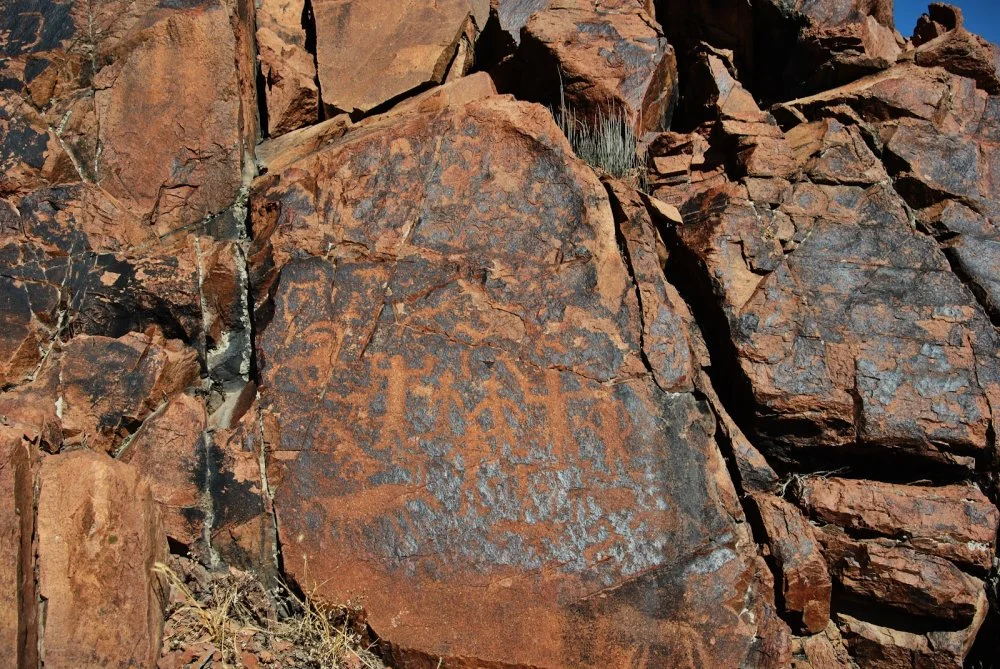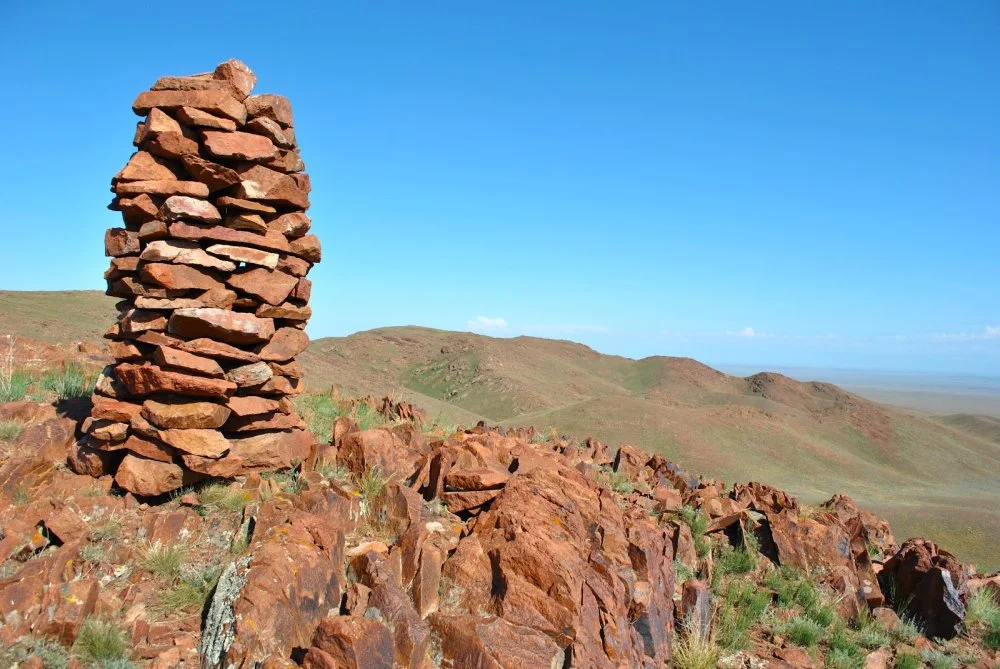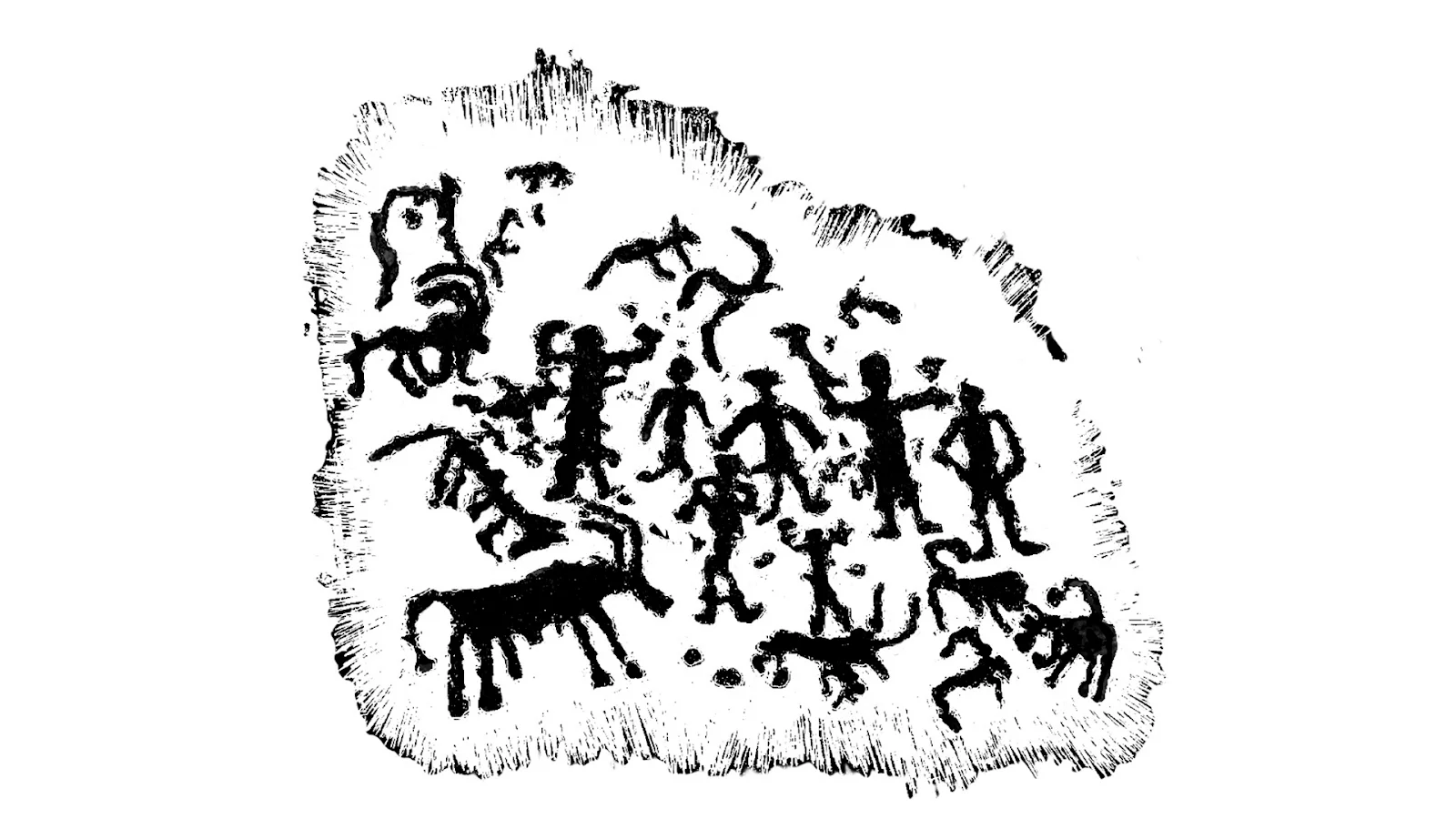Portraits were not a typical genre in Bronze Age (2000–800 BCE) rock art. However, the image of a classical portrait comes to mind when viewing a scene from the little-known Ayuke and Jelbarys petroglyph cluster.
This sanctuary is nestled within a low-altitude, unnamed mountain range in the Almaty region. Now largely abandoned, with just three nearby farms, the area was once teeming with life, as evidenced by the numerous petroglyphs. The hillsides are adorned with ancient drawings, and ancient settlements lie at their foothills in wind-sheltered niches. It’s likely that trade caravans once traversed this area—medieval ruins have been discovered in the eastern part of the range, where shards of glazed ceramics and Chinese porcelain can still be found.
The petroglyphs in the central part of the archaeological complex are carved into pink rocks, giving the natural patina a distinct purple hue. On the background of green grass, the drawings take on an otherworldly appearance.

Portrait. Ayuke/Olga Gumirova
Botanist Andrey Malik discovered this cluster in the early 2000s during his travels across the steppes. He later invited a team of scientific volunteers, led by Doctor of Historical Sciences A. N. Maryashev, to visit this remarkable site.
The slab depicting this scene occupies the most prominent position in the main sanctuary and can be seen from the base of the hill. It dates back to the Bronze Age, approximately 4,000–3,000 years ago, and has since undergone careful restoration multiple times in later periods.

Nature view/Olga Gumirova
The artwork depicts seven anthropomorphic figures of similar height encircled by hoofed and predatory animals. Height in Bronze Age art is significant as it indicates the social status of the figures. Upon closer examination, the figures reveal subtle differences, each displaying a unique posture. Some seem to be holding objects, while two are depicted in a prayer-like stance, with their hands raised.
Whom did the ancient artist-shaman portray?
Most likely, they were important figures—either deities (as suggested by the symbolic number seven) or prominent members of the tribe. Yet, they bear a striking resemblance to ordinary people in a family portrait, as if they paused to be "captured" in a scenic spot, remaining there for millennia.
This makes the Bronze Age scene familiar to us, their 21st-century descendants, even though its true meaning remains elusive. After all, we still don't know for certain which gods were worshipped in this region's Bronze Age pantheon.





